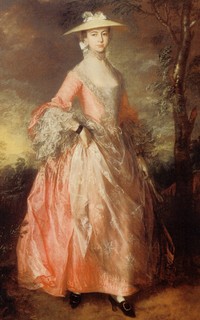
Thretford House
Thretford HouseHome of the Viscount and Viscountess Thretford. Lady Thretford was Winifred Perriam.
This location is used in A Scandalous Countess.
Hammersmith is about 4 miles from London.
Hammersmith and Fulham:
"Here and there a picturesque old tavern may still be seen, recalling to mind the times when stage-coaches travelled along the Hammersmith Road, on their way to the West of England; one such, in the neighbourhood of North End Road, is the "Bell and Anchor," an inn much patronised by people of fashion in the early part of the reign of George III."
Brandenburgh House (called La Trappe in 1760):
"On the right-hand side of the Fulham Road, nearly opposite Sussex House, and with its gardens and grounds stretching away to the water-side, stood Brandenburgh House, a mansion which in its time passed through various vicissitudes. According to Lysons, it was built early in the reign of Charles I. by Sir Nicholas Crispe, of whom we have spoken above in our account of the parish church, at a cost of nearly 23,000L. Sir Nicholas was himself the inventor of the art of making bricks as now practised.
During the Civil War in August, 1647, when the Parliamentary army was stationed at Hammersmith, this house was plundered by the troops, and General Fairfax took up his quarters there; Sir Nicholas being then in France, whither he had retired when the king's affairs became desperate and he could be of no further use. His estates were, of course, confiscated; but he, nevertheless, managed to assist Charles II. when in exile with money, and aided General Monk in bringing about the Restoration. He had, it seems, entered largely into commercial transactions with Guinea, and had built upon its coast the fort of Cormantine. In his old age he once more settled down in his mansion on the banks of the Thames, and dying there, the house was sold by his successor to the celebrated Prince Rupert, nephew of Charles I., so renowned in the Civil Wars. It was settled by the prince upon his mistress, Margaret Hughes, a much admired actress in the reign of Charles II. She owned the house nearly ten years. It was afterwards occupied by different persons of inferior note, until, in 1748, it became the residence of George Bubb Dodington, afterwards Lord Melcombe, who completely altered and modernised it. He added a magnificent gallery for statues and antiquities, of which the floor was inlaid with various marbles, and the door-case supported by columns richly ornamented with lapis lazuli. He also gave to the house the name of La Trappe, after a celebrated monastery; and at the same time inscribed the following lines beneath a bust of Comus placed in the hall..."